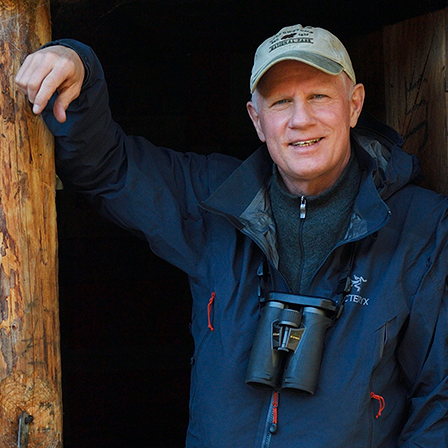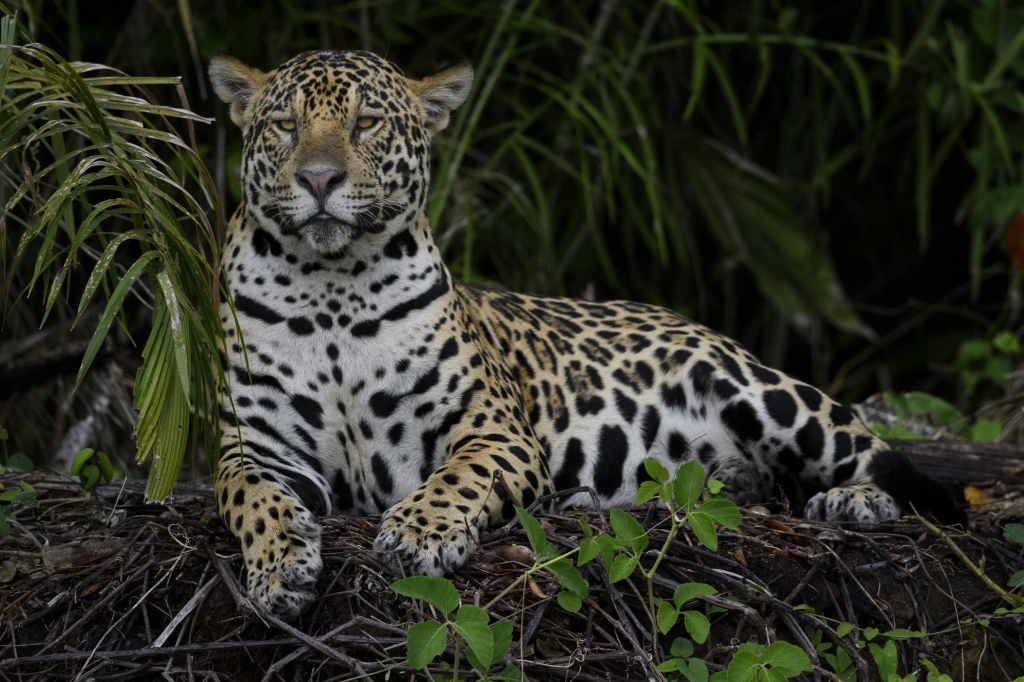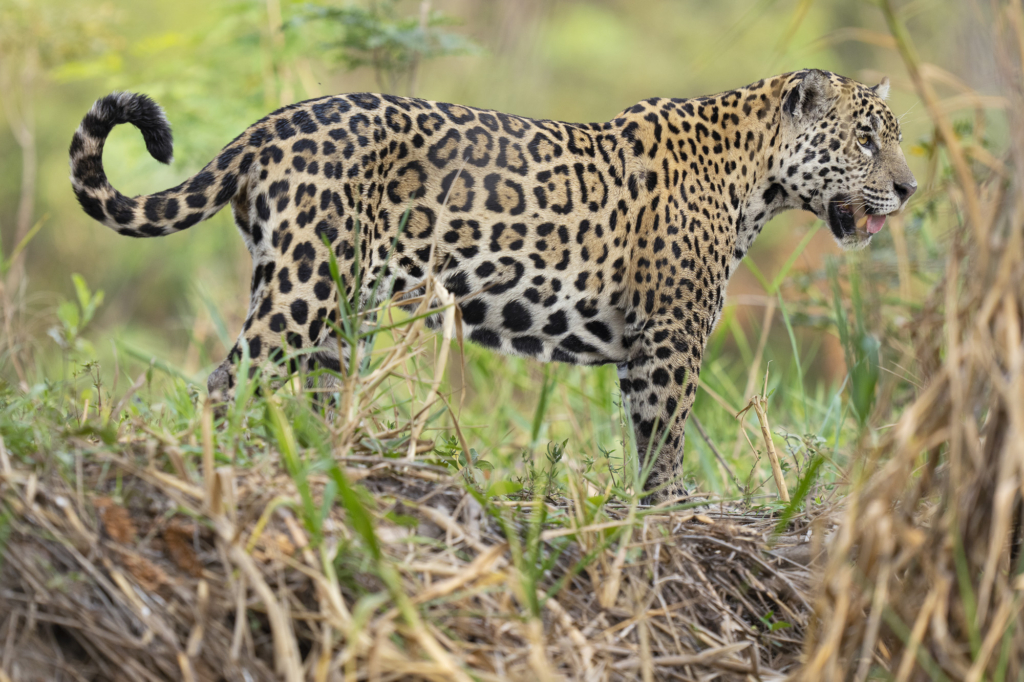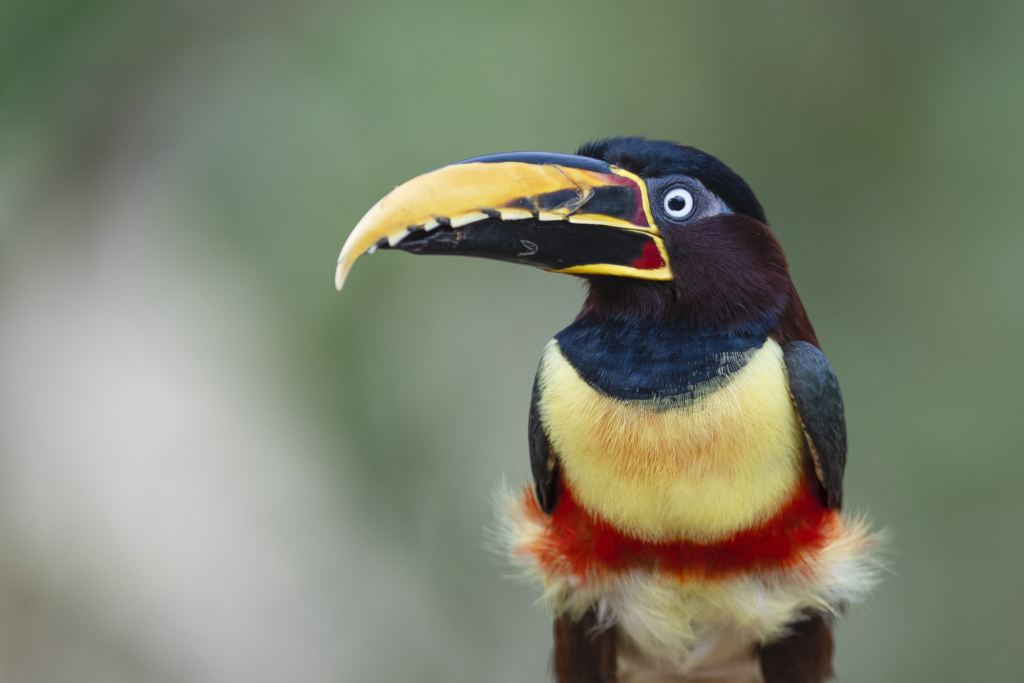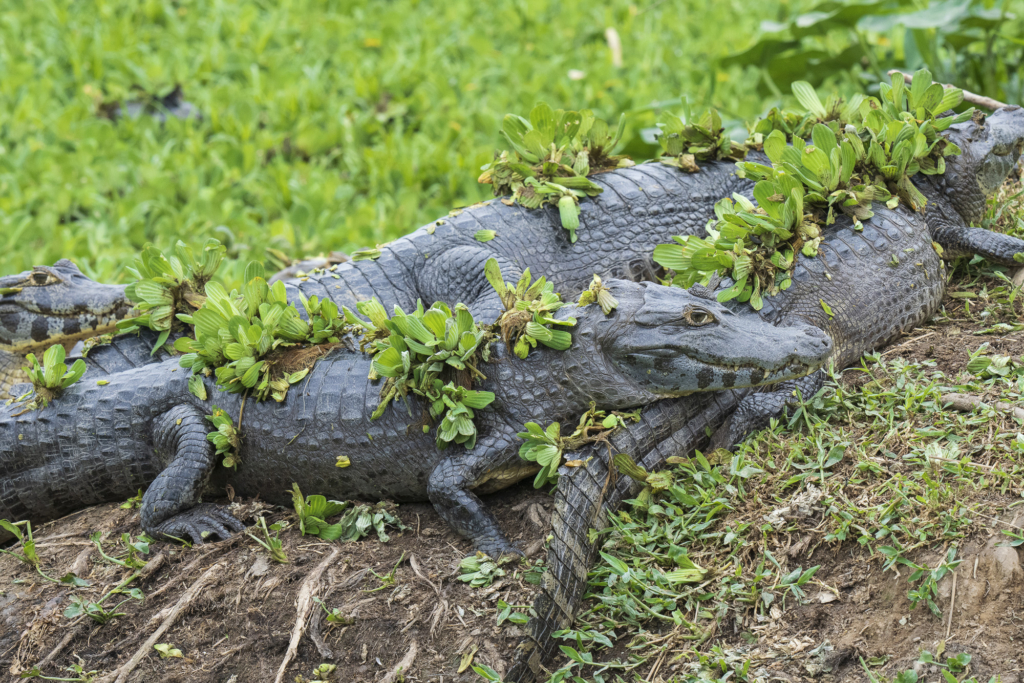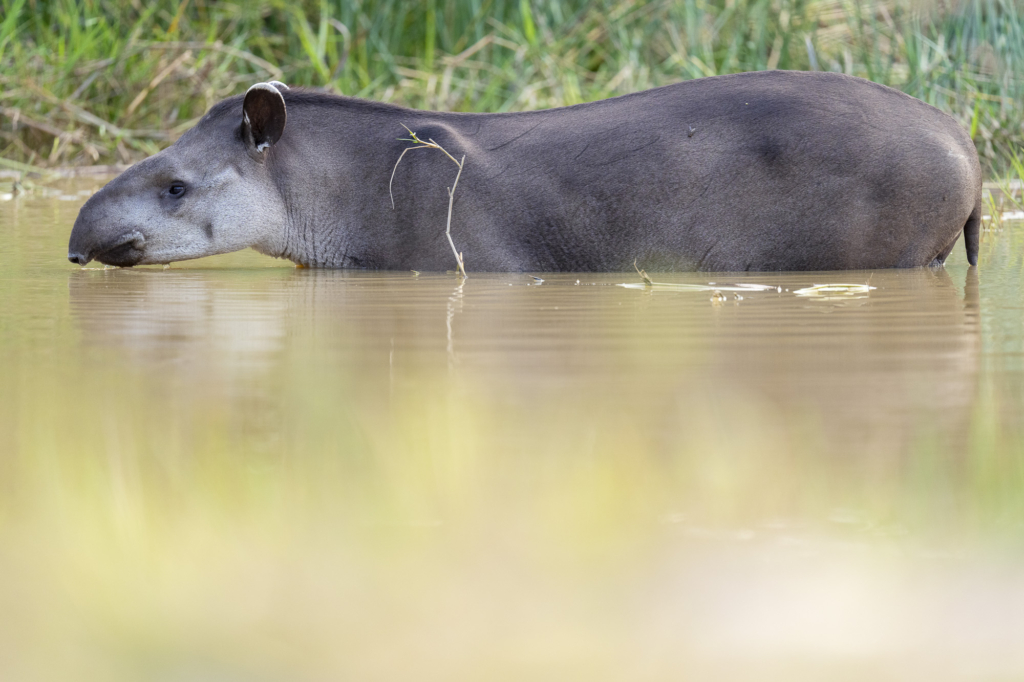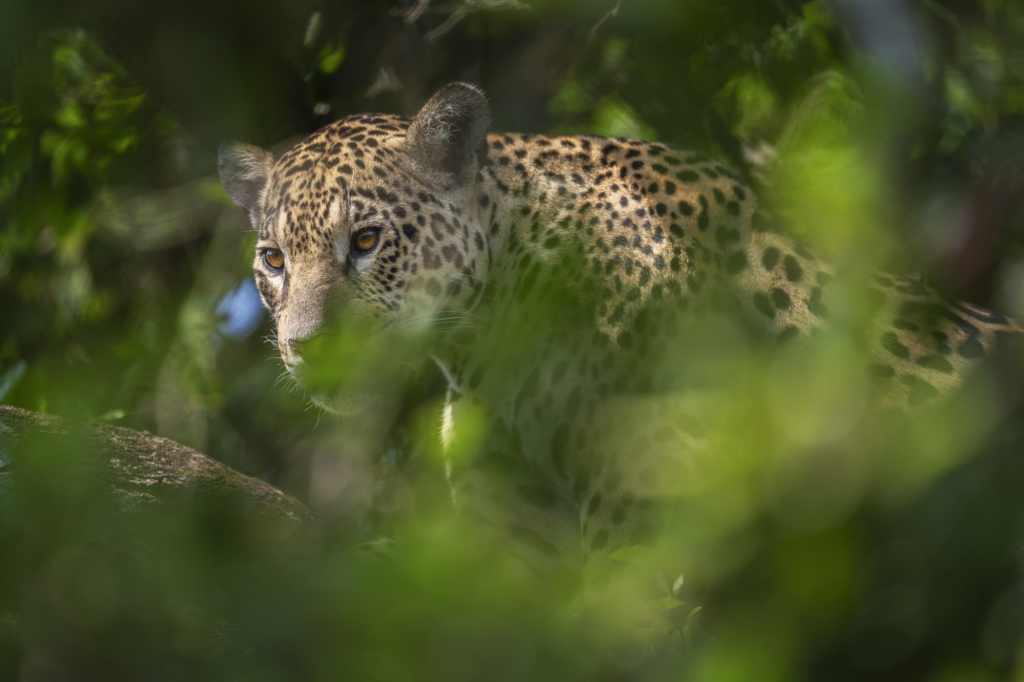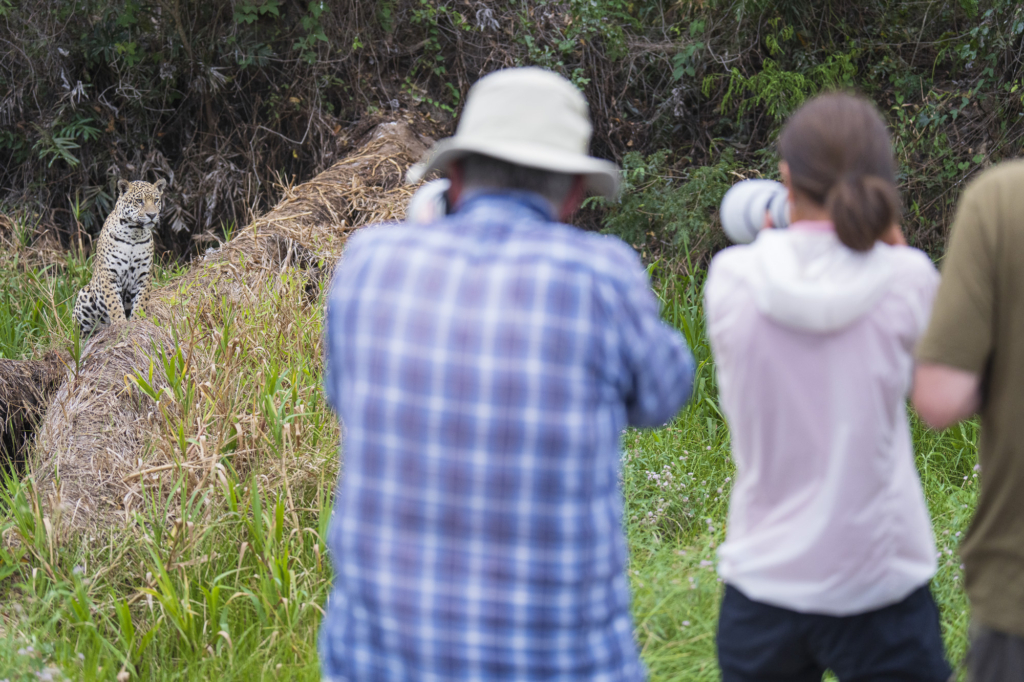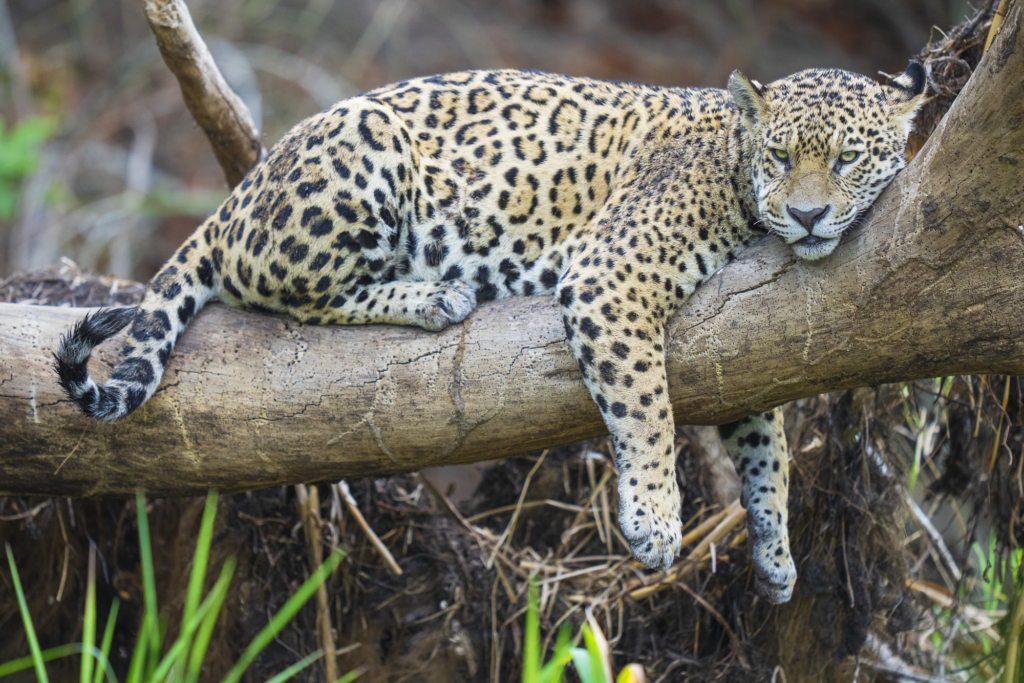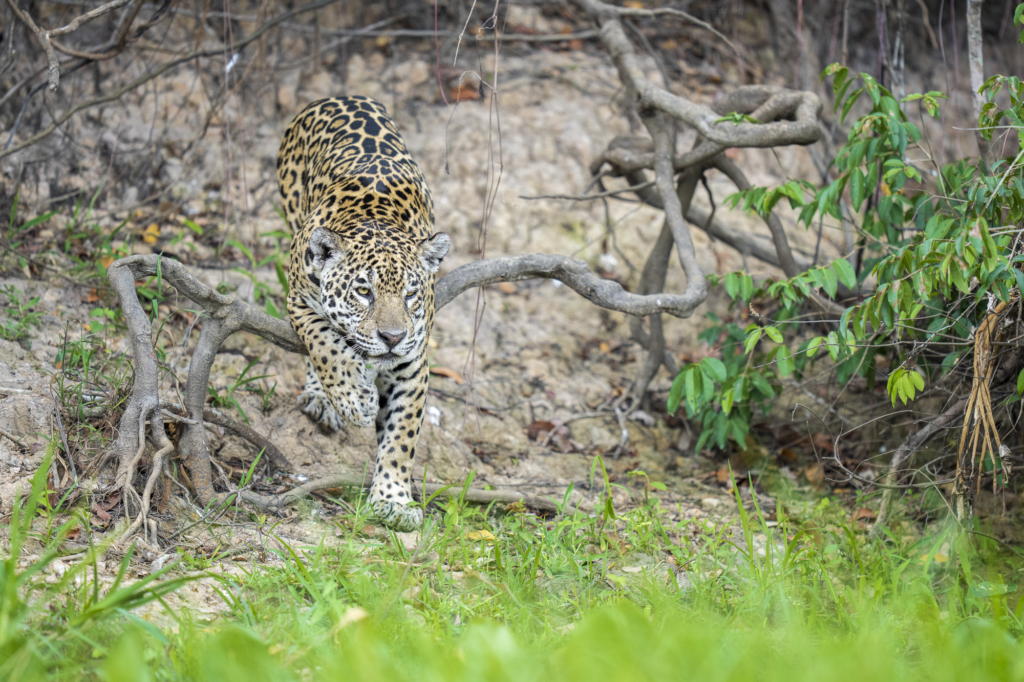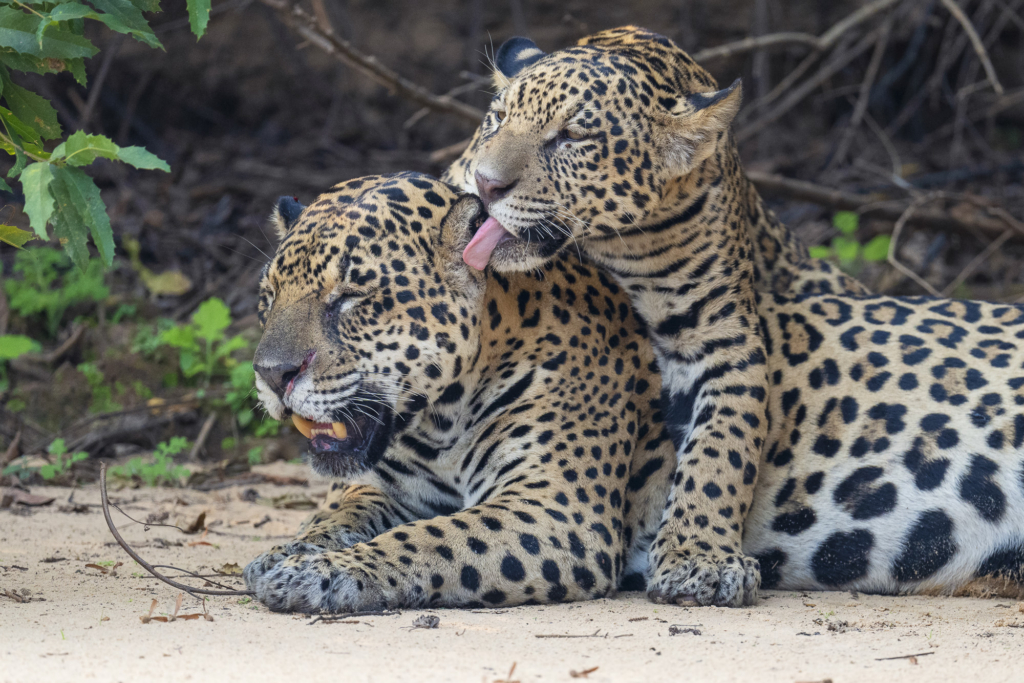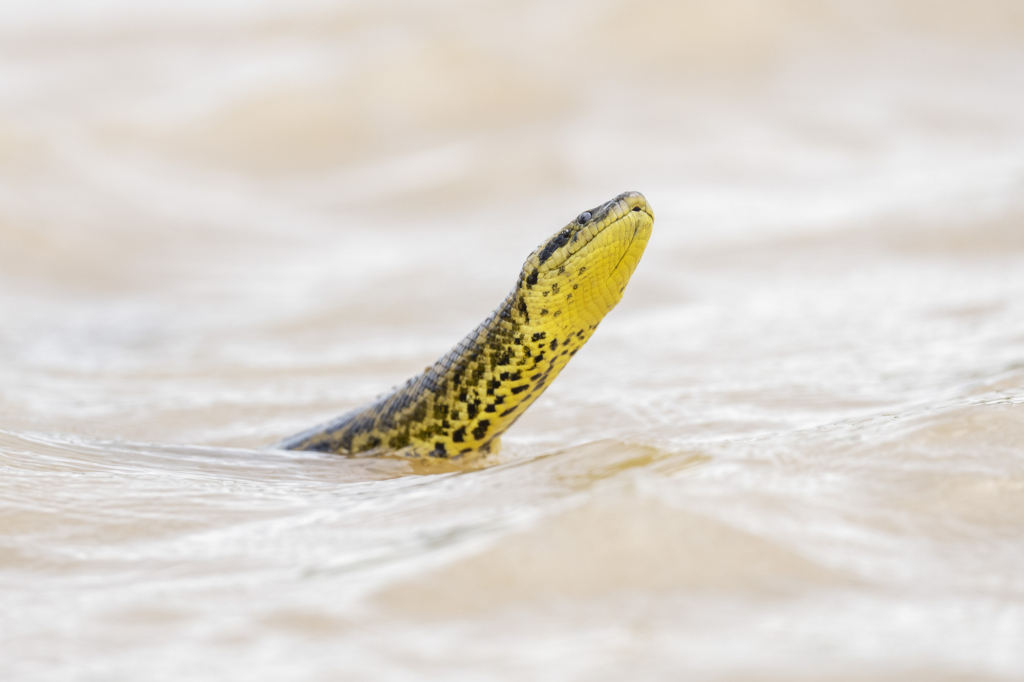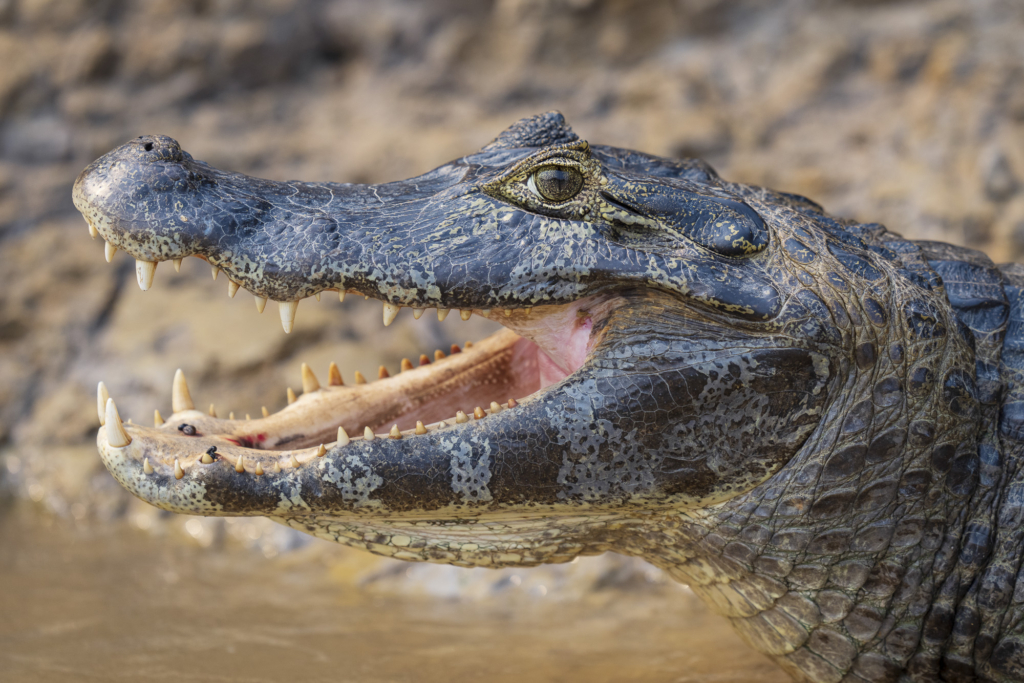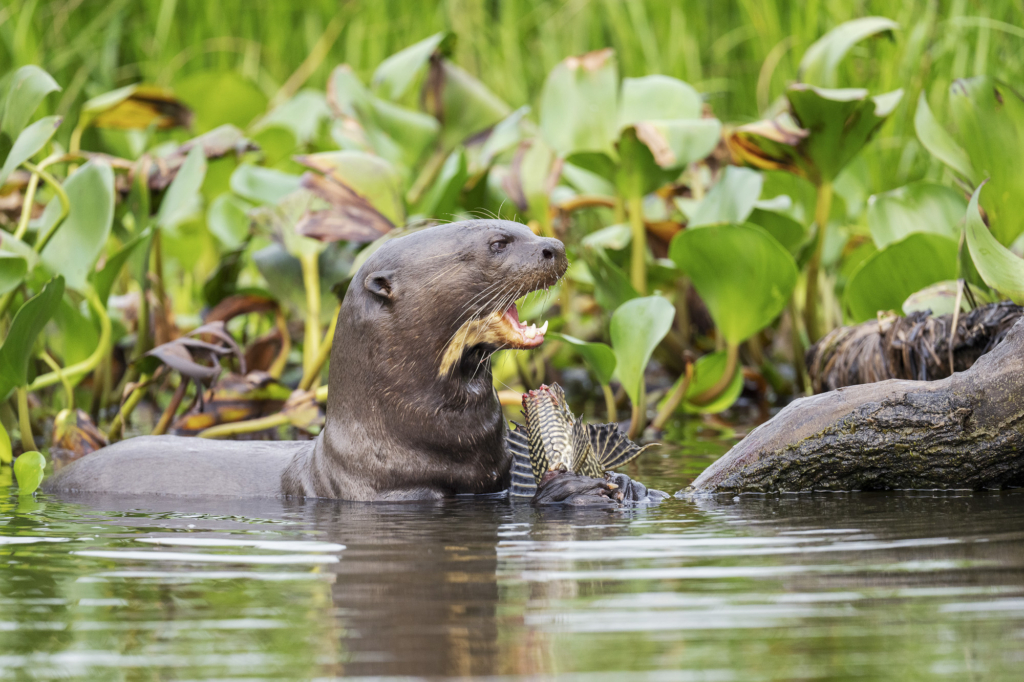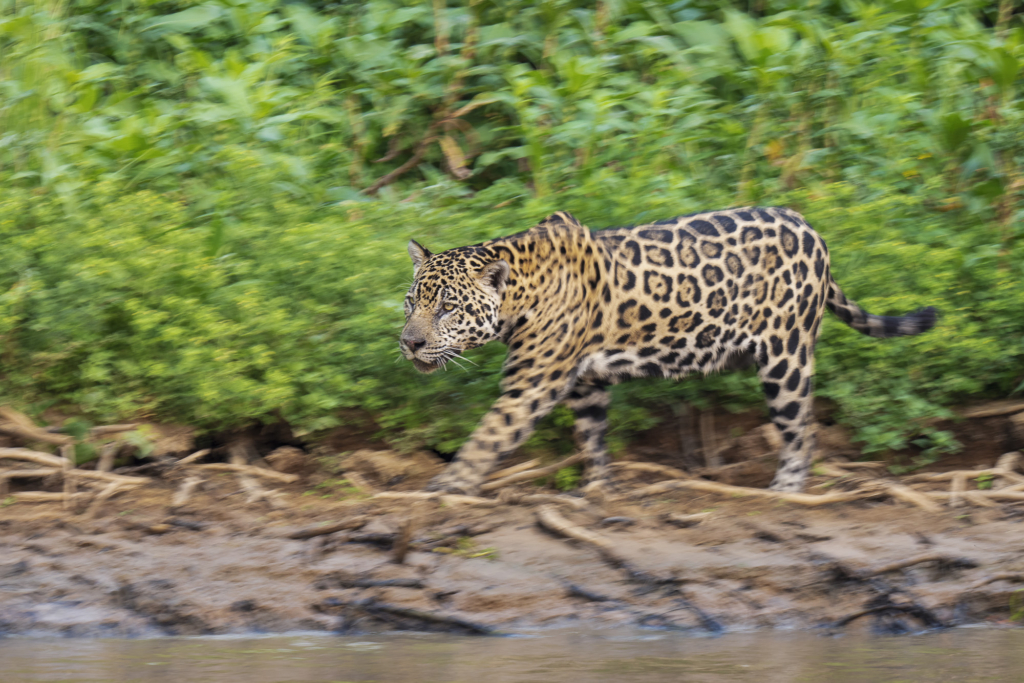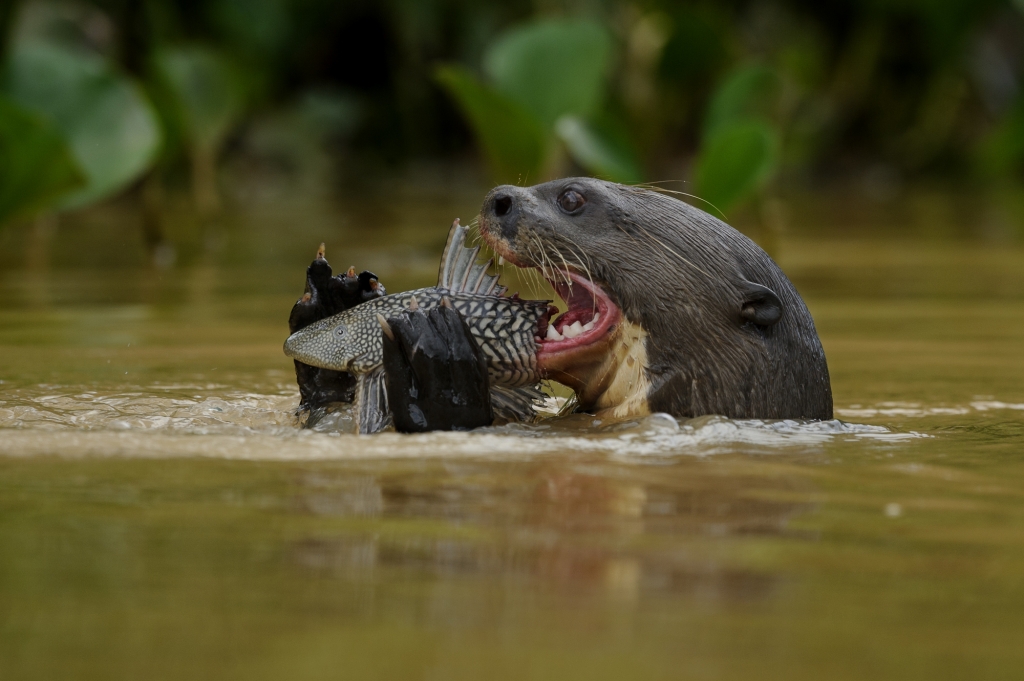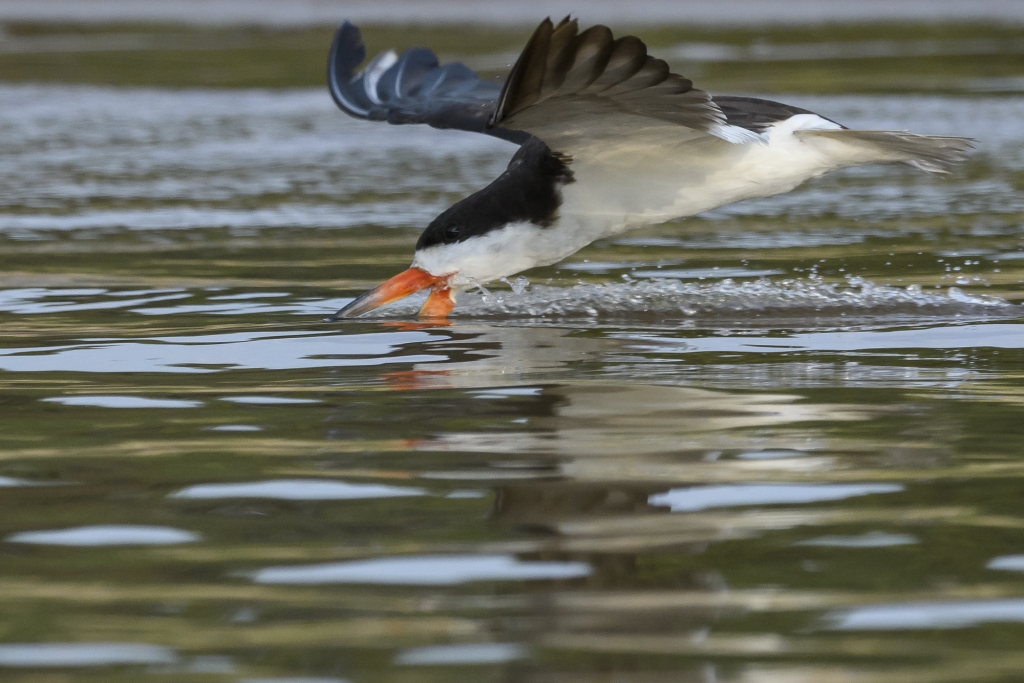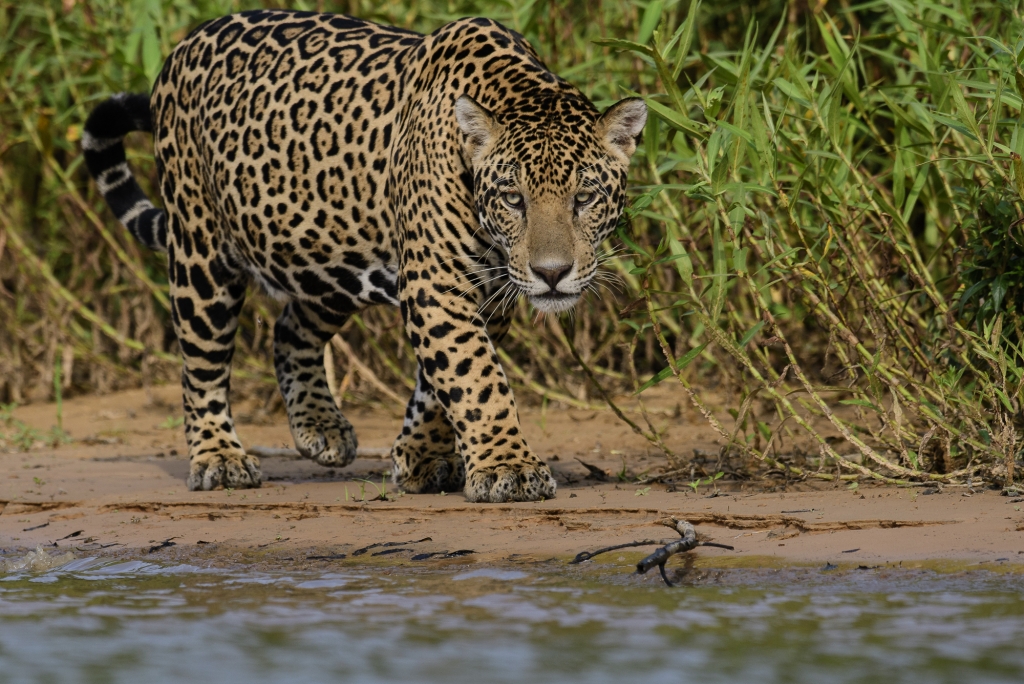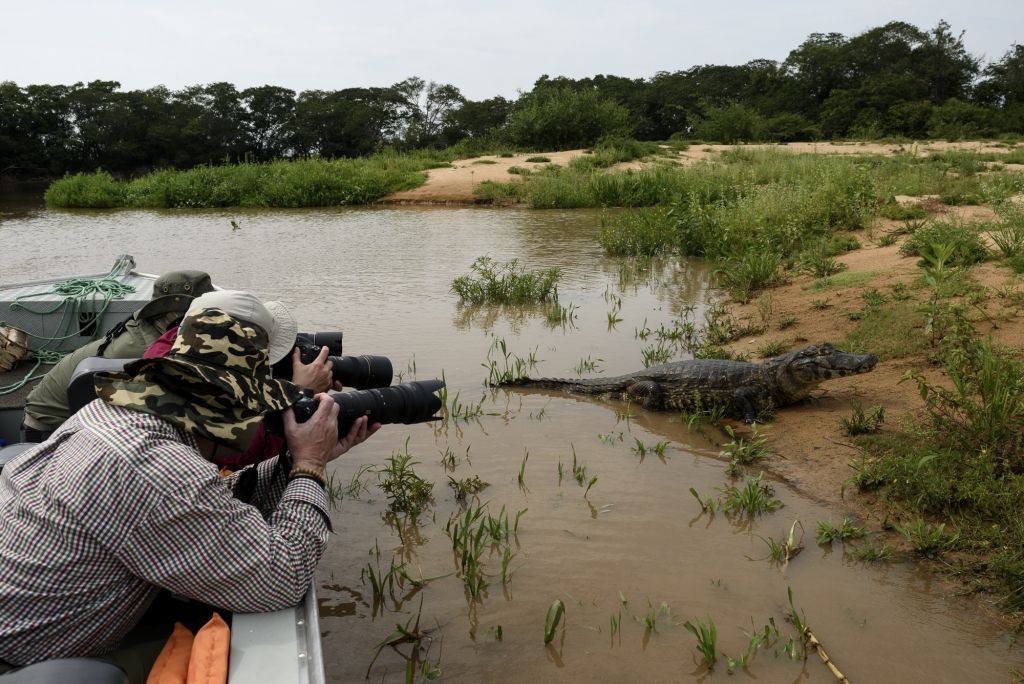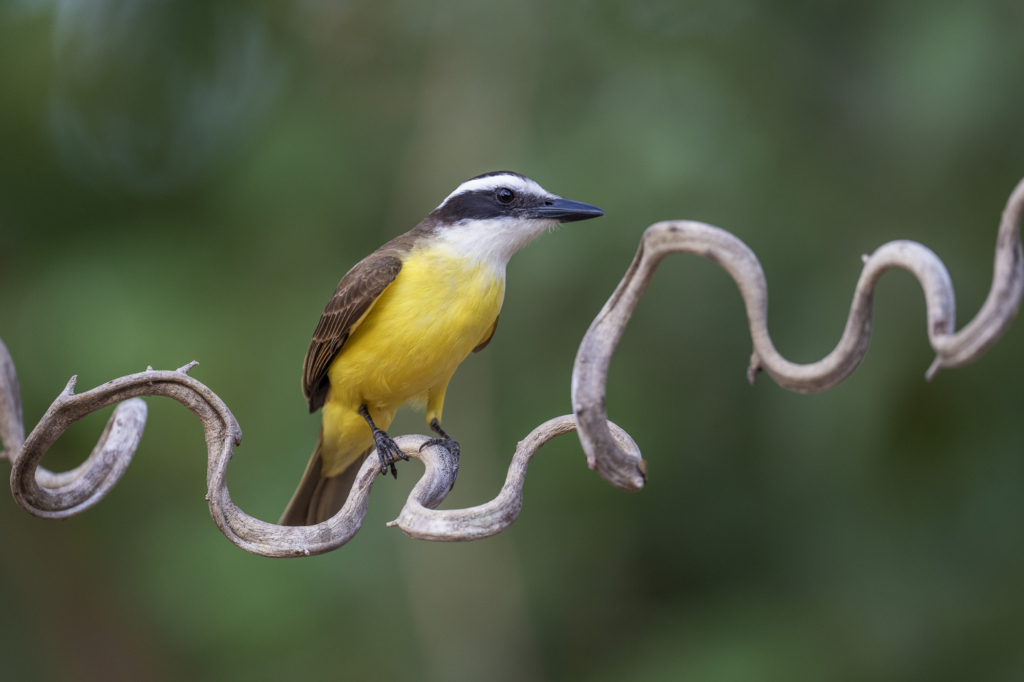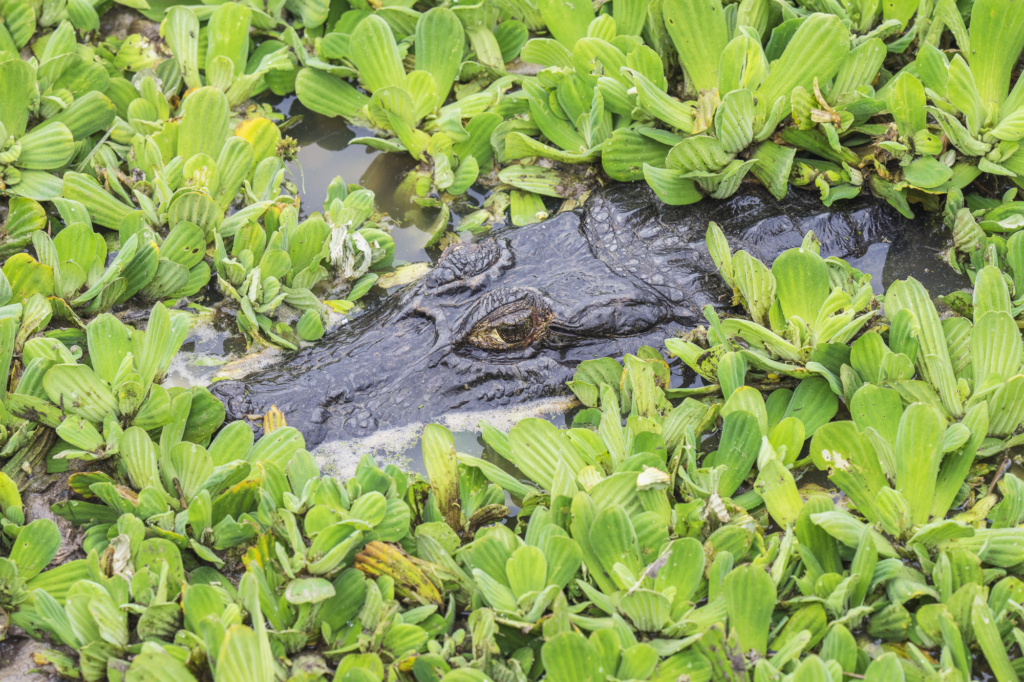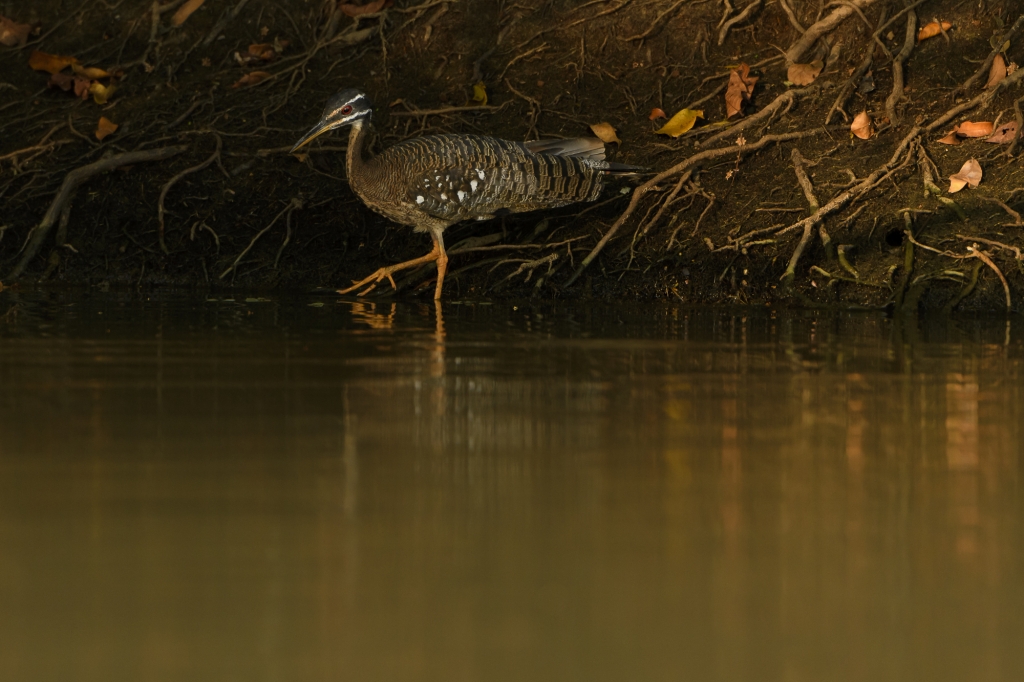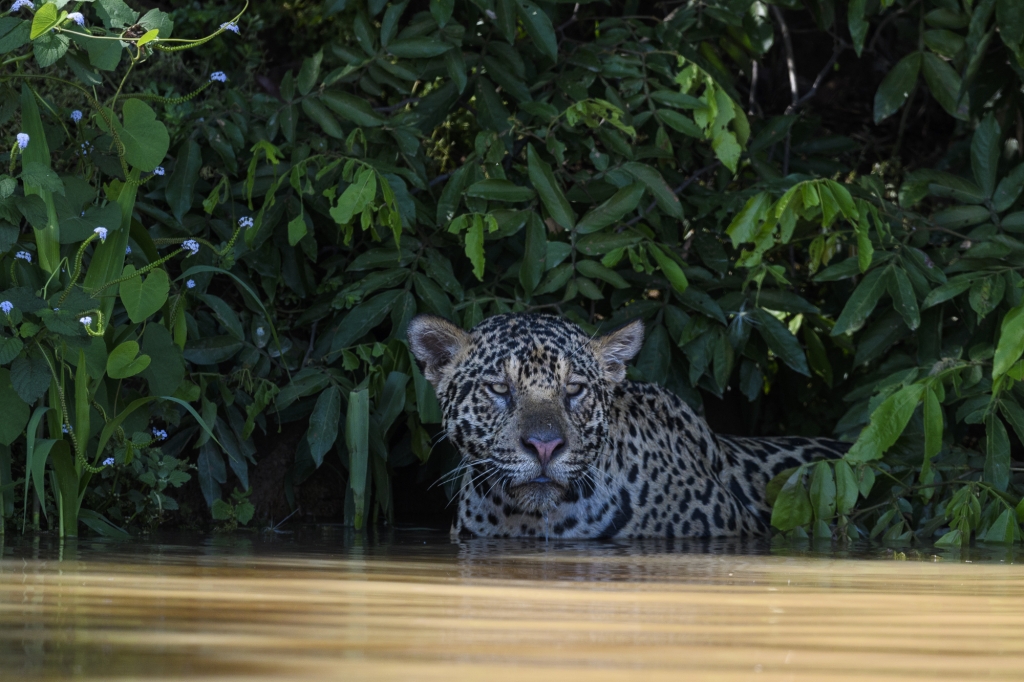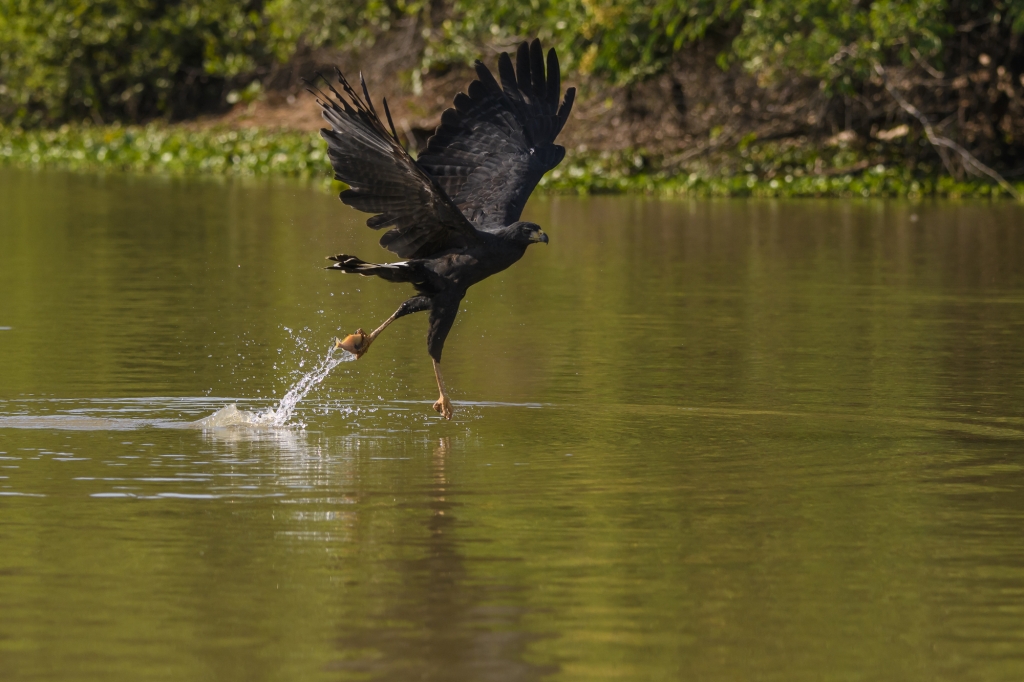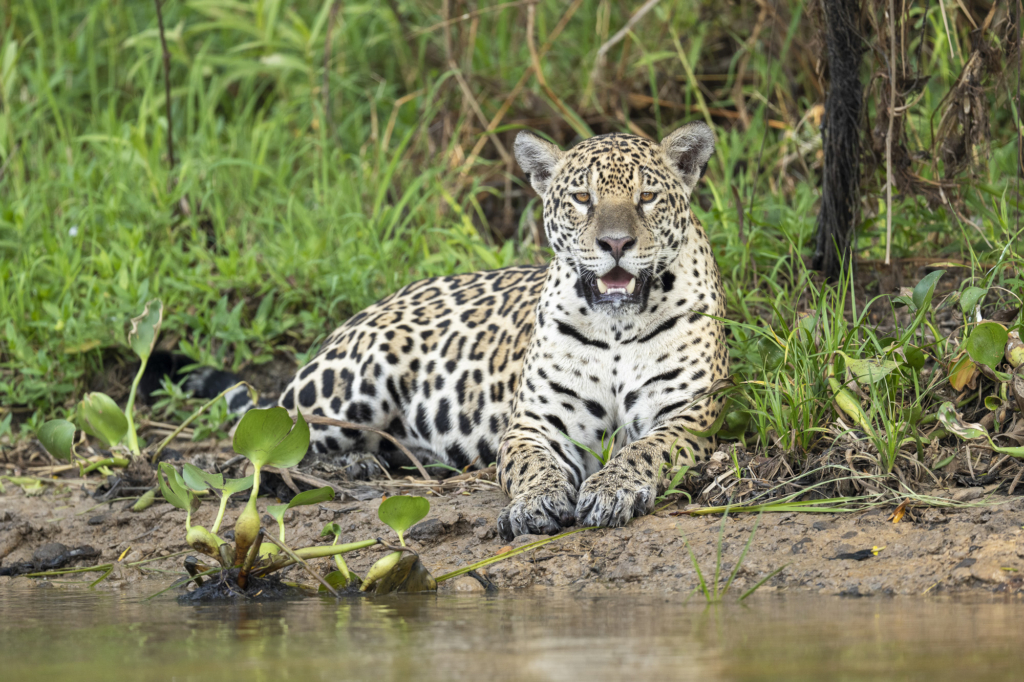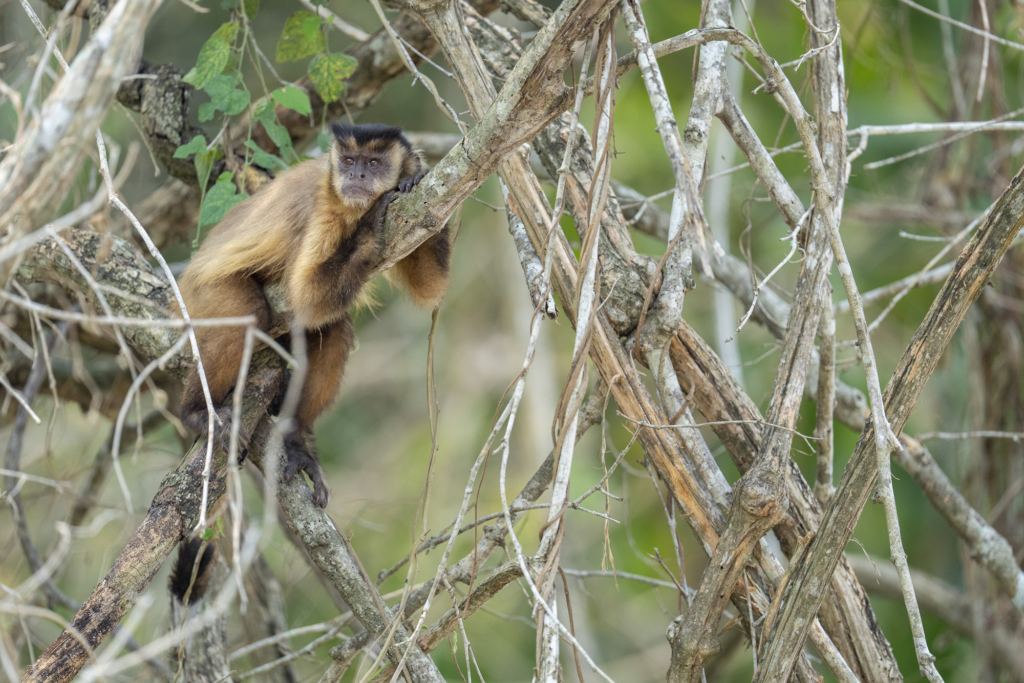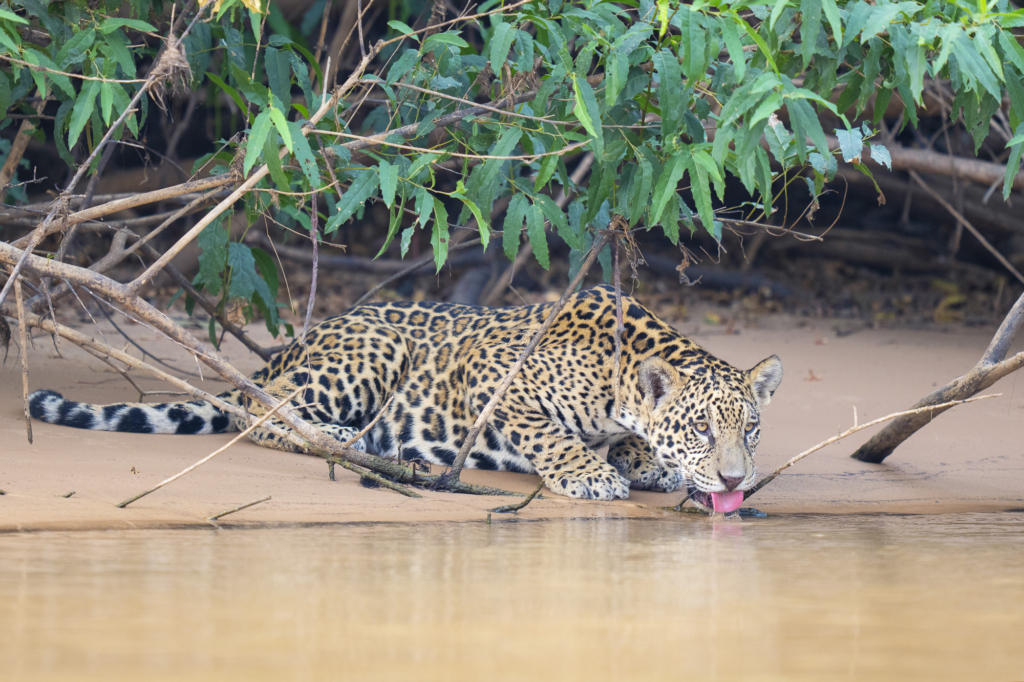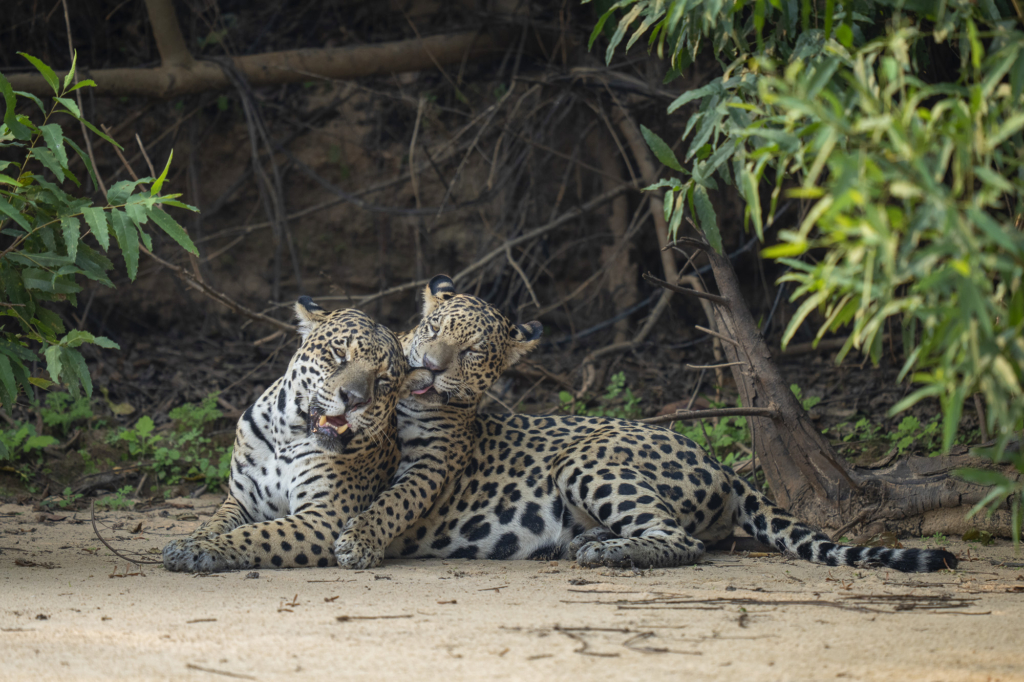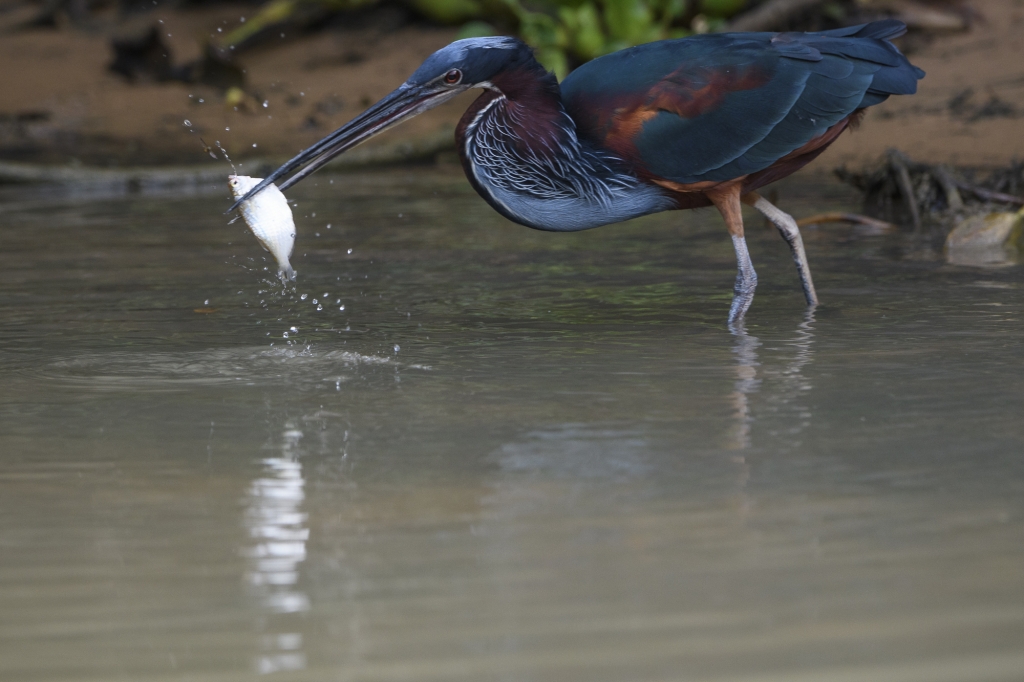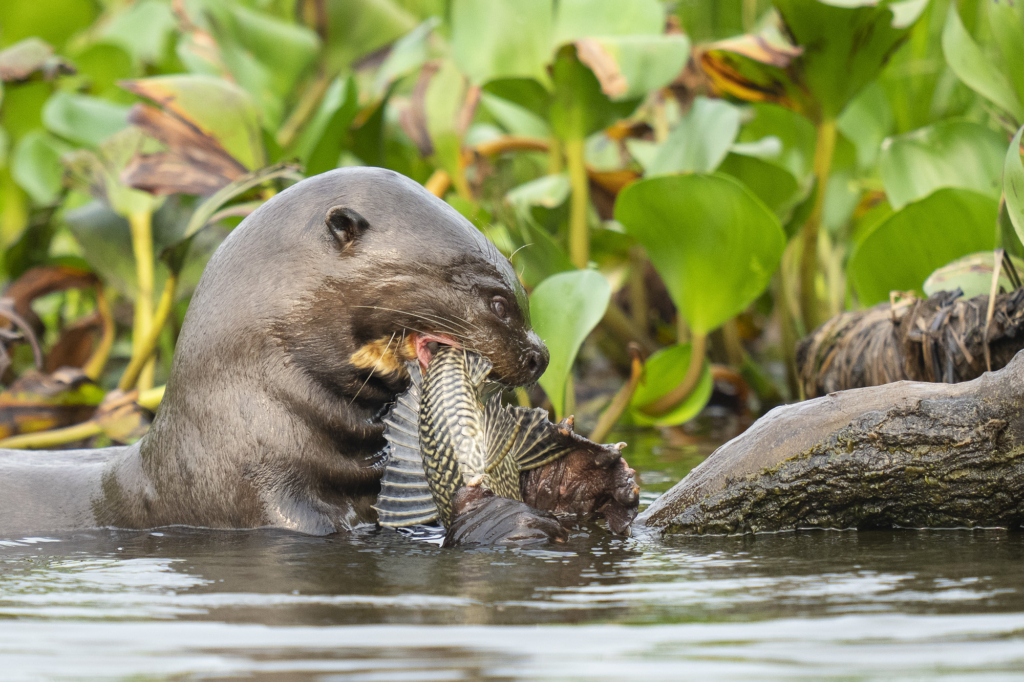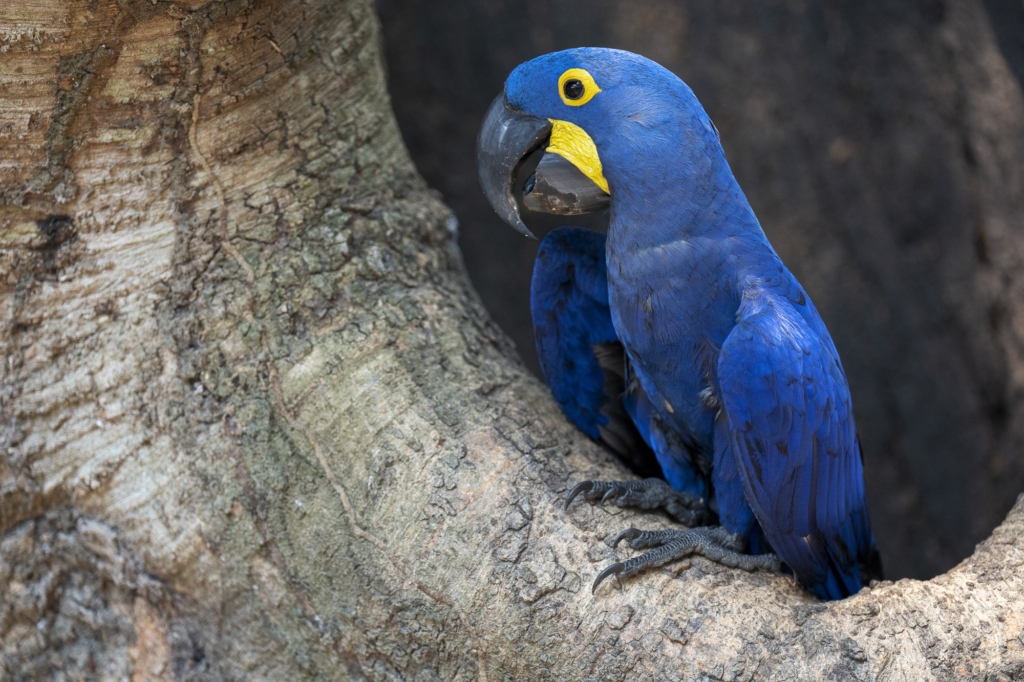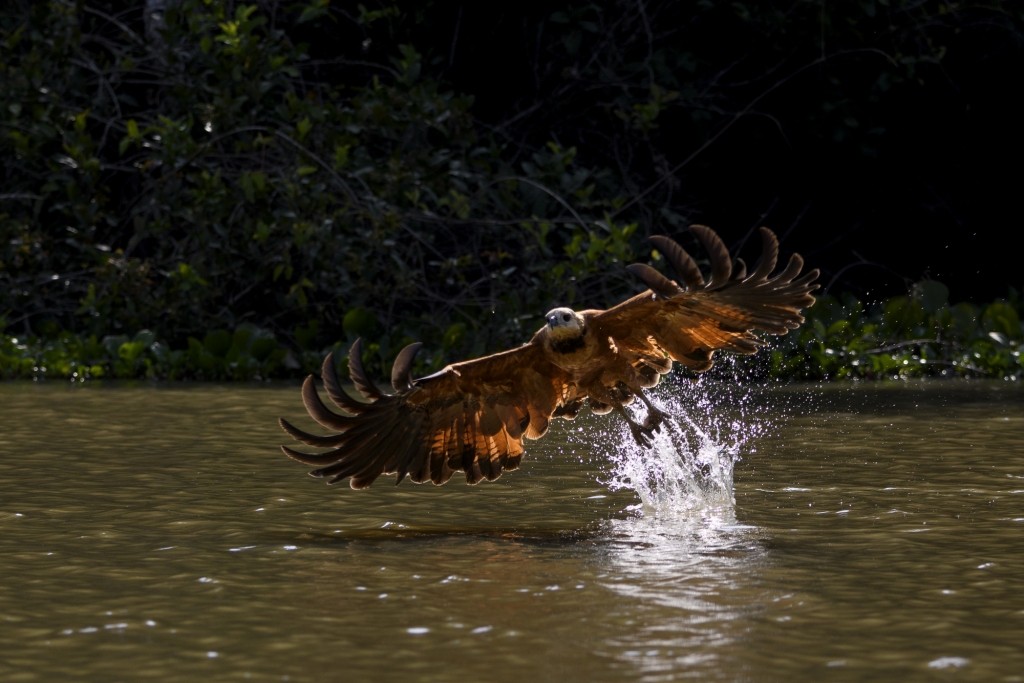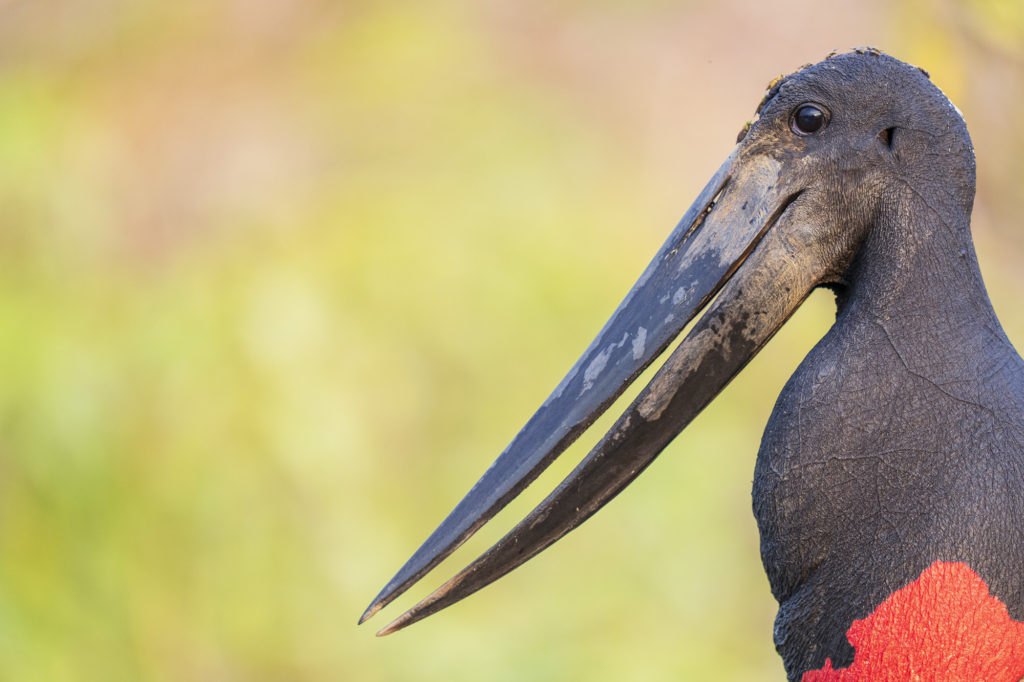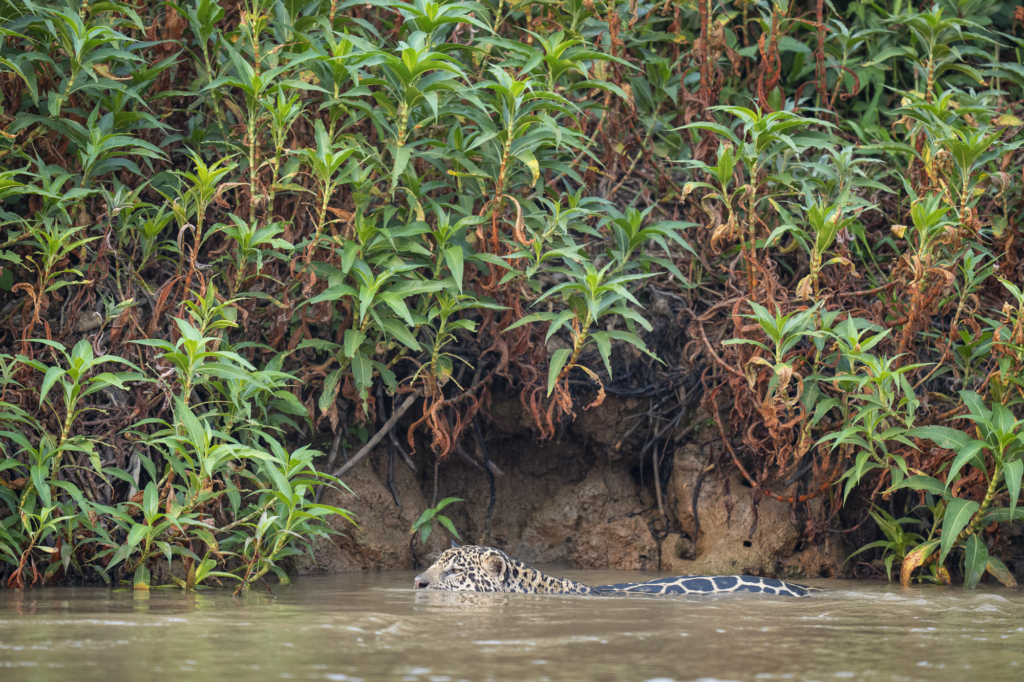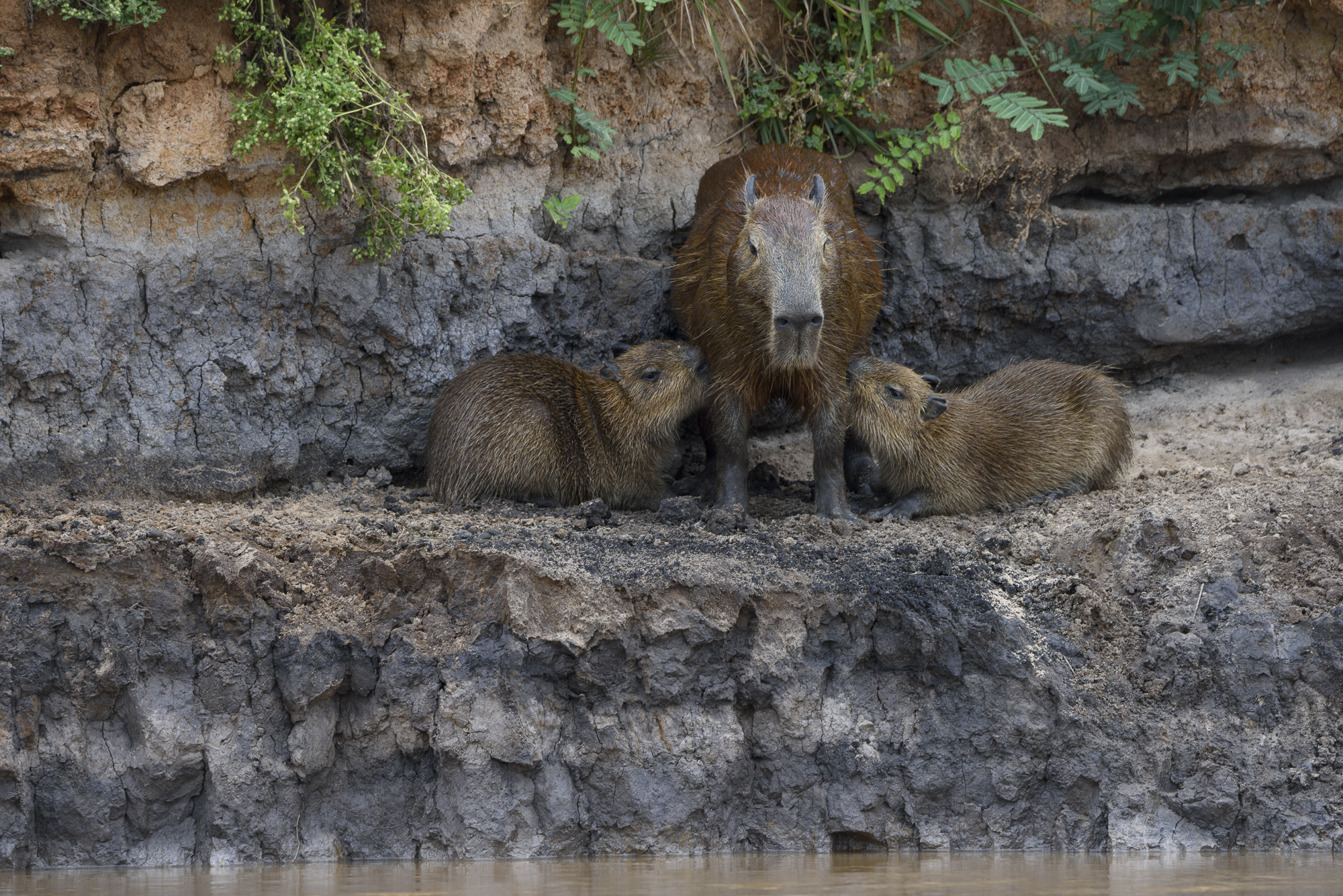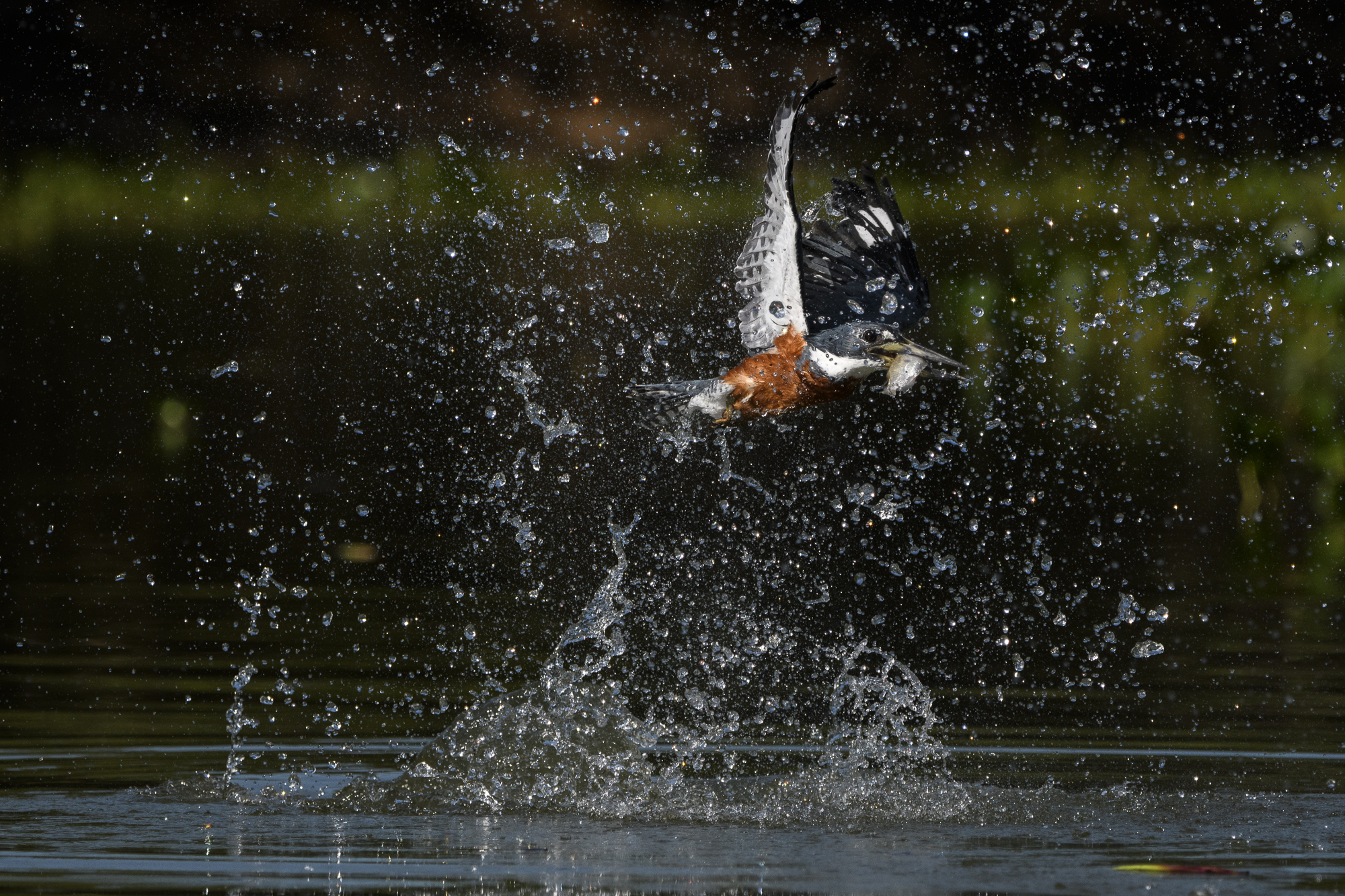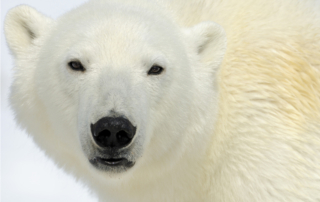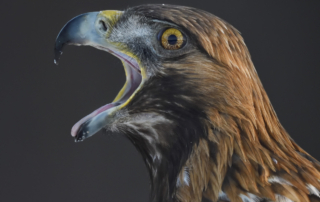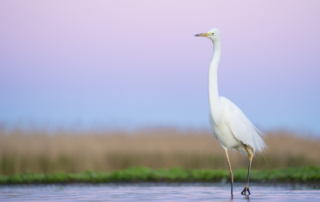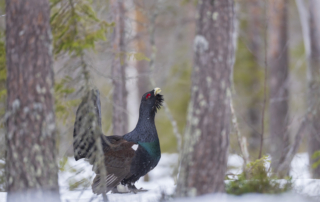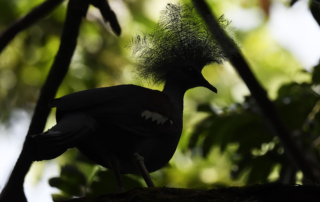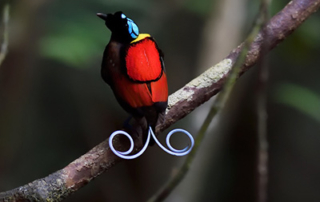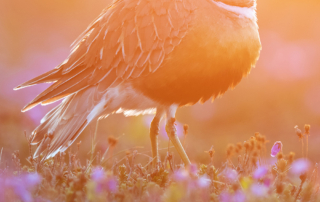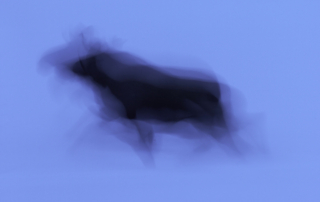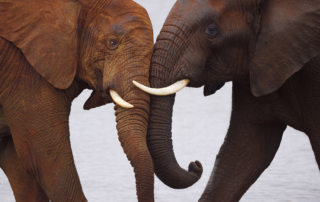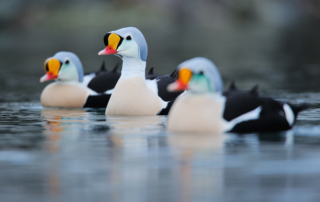SOME HIGHLIGHTS
- Jaguar – We spend 4 days (7 boat safaris) in the world’s best area to see and photograph these amazingly beautiful big cats
- Our local boat drivers are considered among the most professional and best in the area at finding jaguars and giant otters
- On these boat safaris, we are only 4 photographers per boat, so there is plenty of space
- Great chances for close encounters with rare mammals such as the tapir and giant otter, with some possibility of spotting the elusive ocelot
- The world’s largest stork – the Jabiru stork
- The world’s largest parrot – the Hyacinth macaw
- The world’s largest rodent – the Capybara
- Thousands of Yacaré caimans and chances to see anaconda
- Encounters with other mammals such as the coati, howler monkey, capuchin monkey, and several species of deer
- Amazing bird diversity with several other species of parrots, hummingbirds, toucans, storks, herons, kingfishers, and a variety of exciting birds of prey
- Night safaris to search for nocturnal animals and birds
- The tour leader will show you his favourite sites and provide photographic advice, in a small like-minded group
- And remember, we’ve always been there before!
PANTANAL
Pantanal is one of the World’s most biodiverse areas. It is often called the World’s largest wetland, spreading across hundreds of thousands of square kilometers in Brazil, eastern Bolivia and eastern Paraguay. Thanks to the high concentration of wildlife, high biodiversity and a number of varied habitats, Pantanal is really one of the natural wonders of the World. It hosts everything from Jaguars, Piranhas, Anacondas and Capybaras to Giant Otters, Caymans, Swamp deer and an amazing variety of birds. Pantanal is mainly open temporary wetland/savanna, with sparse gallery forests along the rivers and in higher parts. For several months, the Pantanal is almost completely flooded under meters of water. The rest of the year it is a lake-rich, dry savannah.
Wildlife is ever-present in Pantanal, with 405 species of fish, 600 bird species, 80 mammal species, 1100 butterflies and 50 reptile species. Threatened and endangered species such as Jaguars, Pumas, Giant Otters, Maned Wolf, Ocelot, Macaws, Tapirs and Giant Ant-eaters have all found a haven in the impenetrable wetlands.
WILDLIFE AND BIRDS
Whilst staying at lodges and traveling along the Transpantaneira road through the wilderness, we will be searching for interesting subjects to photograph. On the savannah we will be looking for mammals such as Capybaras, Tapirs and Coatis. Large numbers of Herons, Darters, Kingfishers and Jabirus gather in the wetlands. There we will also find thousands of Caymans. Lodge gardens and surroundings provide a plethora of photo opportunities. Here we find less shy species of birds and mammals. Rivers form the veins of the Pantanal, and there is lots to see and discover. On boat rides along the river Pixaim we will also be able to photograph fishing birds of prey and Kingfishers. Weather-permitting we will visit a lodge where the endangered Hyacinth Macaws are abundant. Rivers also give us many chances to come across Jaguars. They are normally pretty shy, but here they tend to come down to the rivers during the dry season to drink, hunt and rest, which usually gives us good chances to see and photograph these great animals. In order to make the best of our opportunities we will be staying on a floating hotel right in the middle of the Jaguar’s core area. During these four days we will make 7 boat safaris in search of Jaguars and other interesting subjects such as Giant otter, Tapir, Capybara and lots of birds to photograph. On each boat trip there will be only be four photographers per boat, to get the best possible photo opportunities.
The tour is planned in order for us to be able to focus on particular species at particular sites. The areas we have chosen to visit in northern Pantanal provide the best possible opportunities to photograph the characteristic species that occur here. Naturally, we will be able to photograph also much more than these main focus species.
During the tour, there will be photographic workshops, where we discuss techniques for the different types of photography we will be doing. We will also discuss composition and each other’s images, all in order to take your photography to the next level.
Itinerary
Travel day
Flights to Brazil. As we have an early start on the 12th October, we recommend that you arrive in Cuiaba in the evening of the 11th October.
Day 1 (12/10) (Lunch – Dinner)
We meet up in Cuiabá at 09 in the morning. Transport to our lodge. Lunch on the way to the lodge. After lunch our first meeting with the fantastic game-rich Transpantaneira road. During the afternoon and late evening we go on safaris to look for the Pantanal’s spectacular wildlife.
Day 2 (13/10) (Breakfast – Lunch – Dinner)
The morning is spent in the fields in and around our lodge. At dawn, we go on our first safari. After breakfast, we leave the lodge and head toward Porto Jofre, with the entire journey being a safari offering many photo opportunities along the way. We check into our hotel in Porto Jofre before heading out on our first boat trip on the Cuiabá River to search for jaguars and all the other exciting wildlife along the riverbanks.
Day 3-5 (14-16/10) (Breakfast – Lunch – Dinner)
Spend three full days exploring the wildlife-rich Cuiabá River by boat. Our primary focus is to spot the elusive jaguar in its natural habitat. As we navigate the river, you’ll also have fantastic opportunities to photograph giant otters, caimans, a wide variety of bird species, and other fascinating wildlife.
Each day includes a midday break for lunch and a short rest before continuing our safari. In the evenings, enjoy engaging lectures and hands-on photography workshops to deepen your experience and skills.
Day 6 (17/10) (Breakfast – Lunch – Dinner)
After an early breakfast, we depart Porto Jofre and begin our journey back along the Transpantaneira Road toward our next lodge. In the afternoon, we’ll head out on a boat excursion along the Pixaim River, searching for exciting subjects to photograph. Keep your camera ready for kingfishers, elegant herons, storks, and birds of prey.
As night falls, we’ll settle into a hide with the hope of spotting—and photographing—the elusive and beautiful ocelot.
Day 7 (18/10) (Breakfast – Lunch – Dinner)
In the morning, we embark on another boat trip along the Pixaim River, continuing our search for the region’s many captivating photo opportunities. With an abundance of kingfishers, herons, and birds of prey, there’s always something to catch the eye—and the lens. If we’re lucky, we might even spot the mythical and striking Agami heron.
In the afternoon and into the evening or night, we’ll head out on additional safaris in search of the Pantanal’s spectacular wildlife. Perhaps we’ll be treated to another sighting of the elusive ocelot.
The ranch where we stay is known for its unusually approachable wildlife—hunting hasn’t taken place here for over 25 years. Even outside of scheduled safaris, the area around the lodge offers excellent opportunities for bird photography and peaceful observation.
Day 8 (19/10) (Breakfast – Lunch)
In the morning and late morning hours, we’ll either take one last boat tour on the river or explore the surrounding lands near the lodge in search of final photo opportunities.
After lunch, we begin our journey back toward Cuiabá. For those not joining the extension trip to see anteaters, armadillos, and macaw colonies, it’s time to start the journey back home.
More information
Photographic leader
Staffan Widstrand, born in 1959 is a photographer and writer. Sony Imaging Ambassador.
Staffan is one of Sweden’s internationally most recognized photographers. In 2011, Outdoor Photography Magazine called him ”one of the most influential photographers in the world”. Appointed ”Wildlife photographer of the year” in Sweden and a winner of international photo competitions, such as:
Wildlife Photographer of the Year
European Nature Photographer of the Year
Emirates Wildlife Photographer of the Year
Årets Bild i Sverige
PGB Awards
Staffan has been on the jury of several international photo competitions and was one of the main jury members in World Press Photo 2013.
Published in most of the major magazines in the world, such as National Geographic Magazine, GEO, Stern, Der Spiegel, Le Figaro, La Repubblica, El Mundo, El País, Natur, Terre Sauvage, Animan, Veja Brazil, The Guardian, The Sunday Times, FOCUS, Yomiuri Shimbun och Shanghaibaserade The Bund Pictorial.
Staffan has had international solo or group exhibitions in Toronto, at the Swedish Embassy in Tokyo, at Tromsø Museum, at Bodø Museum, at the Kunst-und Ausstellungshalle in Bonn, Oslo City Hall, Finlandia Hall in Helsinki, the Swedish Embassy in Washington, in Mérida, Mexico, in Mexico City, in Salamanca, Spain, at the National Zoological Museum in Beijing, in Chengdu, Tianjin, Shanghai and Shenzhen, China, at the National Museum of Wildlife Art in Jackson Hole, the museum of Torino, Italy as well as major outdoor exhibitions in The Hague, Prague, Berlin, Madrid, Copenhagen and Stockholm. In Sweden, he has had exhibits at Kulturhuset in Stockholm, the regional museums in Kristianstad, Luleå and Malmö, at Fotomässan in Gothenburg and in Stockholm, as well as at the Skansen, Kolmården and Borås Zoos, at Hornborgasjöns Konsthall and at Bränneriet Art in Österlen.
Staffan has published 18 books, four of which have been winners of the WWF Panda book award.
A picture editor at Natur & Kultur publishers in Stockholm for 5 years, a nature tour guide and tour production manager all across the world for many years. Appointed as Visiting Professor at the Beijing Ministry of Culture Old University, and he is also one of the founders of a possible ”Wild Wonders of China” initiative.
Staffan is a member of the Swedish Nature Photographers Association (Naturfotograferna/N)
Website: www.staffanwidstrand.se
www.wild-wonders.com
www.rewildingeurope.com
www.wildwondersofchina.com
